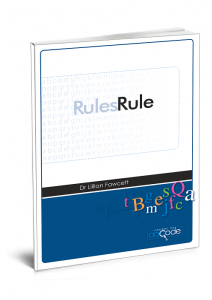Sample of the Oral Reading section: Multisensory Reading Level 4 program.
 1. The Oral Reading section has been developed to increase the ability of older students with dyslexia or difficulties with reading to rapidly and accurately decode text.
1. The Oral Reading section has been developed to increase the ability of older students with dyslexia or difficulties with reading to rapidly and accurately decode text.
- The text has been divided into eye span lengths to encourage students to look at chunks of text and move away from a word by word focus. A fluent oral reader decodes the text ahead of the words that are being spoken. To develop this skill, you are asked to place a cardboard strip above the line being read and to cover the line completely once the student says the second last word.
- Each passage includes vocabulary from the corresponding column of words being learned (i.e. Passage 1 = Column 1). Using the same words provides additional practice in the learning and retention process as well as further developing students’ understanding of the words by placing them in context.
2. Students are required to complete one oral reading exercise each day. The student:
- First reads through the passage backwards so that the focus is on each word and to minimise guessing.
- Together work out unknown words.
- Underline unknown words.
- Practise reading the underlined words.
3. The student reads the passage until the accuracy and time goals are met.
- The number of errors and times are recorded in the boxes to the side. Meeting accuracy and time goals assists in the development of processing speed which results in increases in students’ ability to read fluently without errors.
4. After the time target is reached, the student rereads the passage silently (without timing) to ensure there is full comprehension of the text.
- Effective reading requires understanding as well as decoding. Thus you are required to ask the student two or three comprehension questions about the passage to assess understanding. The student should be encouraged to refer back to the text to both find and justify the answer and to answer using full sentences (e.g., Question: What did Tom think of the males? Tom thought the males were dominant).
- Each passage contains one sentence that doesn’t address the same subject matter as the other sentences. Identifying the sentence that does not belong encourages the student to move beyond a basic understanding of the text and to make inferential judgements. In determining the sentence that doesn’t belong, the student needs to establish the main idea of the other sentence.
- In the final task, the student identifies whether the underlined word is a verb, noun, adverb, adjective, etc. and finds meaningful substitute words (these words do not have to have the same meaning but just make sense from a grammatical perspective). This exercise is designed to develop the student’s understanding of the grammatical structure of English.
There is a long history of research showing the benefits of repeated reading for improving fluency (and often comprehension) for students with reading difficulties (e.g., Vadasy & Sanders, 2008, Sukhram, 2008). In fact, meta-analyses conducted by Lee and Yoon (2015) and Stevens et al. (2017) showed repeated reading remains the most effective intervention of improving reading fluency, especially for students with reading difficulties.
References
Lee, J., & Yoon, S. (2015). The effects of repeated reading on reading fluency for students with reading disabilities; A meta-analysis. Journal of Learning Disability. 50 (2), 213 – 224.
Stevens, E.A., Melodee A. Walker, M.A., & Vaughn, S. (2017). The effects of reading fluency interventions on the reading fluency and reading comprehension performance of elementary students with learning disabilities. Journal of Learning Disabilities, 50(5), 576–590.
Sukhram, D. (2008). The effects of oral repeated reading with and without corrective feedback on the fluency and comprehension of narrative and expository text for struggling readers. Ph.D., University of Illinois: Urbana-Champaign.
Vadasy, P., & Sanders, E. (2008). Benefits of repeated reading intervention for low-achieving fourth and fifth grade students, Remedial and Special Education, 29 (4) 235-250

Click on the book image to purchase.

If you have any questions or need assistance, please send Lillian a message.




